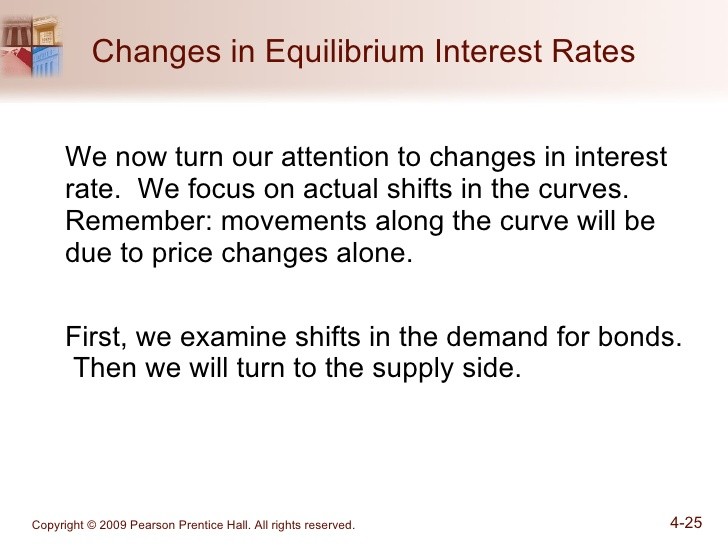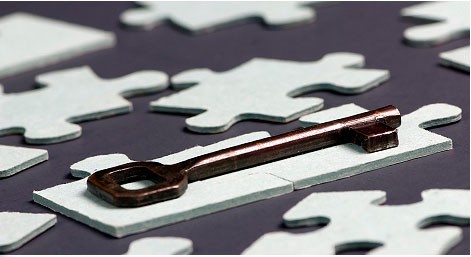Why Do Interest Rates Change
Post on: 24 Июль, 2015 No Comment

This article addresses common questions around the role interest rates play in financial markets, including how and why they change and the implications of those changes.
Why Do Interest Rates Change?
Interest rates change over time, reflecting both the demand from borrowers and the supply of funds available to be loaned by providers of capital.
The best way to think of interest rates is as the “price of money”. If a borrower wants to spend more than his actual cash on hand, he’ll need to find someone to lend him additional funds. The lender will in turn consider the benefits of keeping his money for his own spending or putting it into an investment.
Both the lender and borrower look at the interest payment on the loaned amount in percentage terms. A $5 interest payment on a $100 loan that is outstanding for one year is called a 5% interest rate (5 divided by 100).
The interest rate charged to a borrower reflects the level of risk that the particular borrower might default on the loan. The rise and fall of interest rates is very difficult to predict and reflects economic growth, monetary policy and fiscal policy .
Factors to Consider
Economic Growth
The most important factor impacting interest rates is the supply of funds available from lenders and the demand from borrowers. Let’s use the mortgage market for our example. In a period when many people are borrowing money to buy houses, banks need to have funds available to lend. These funds can come from their own depositors, since the banks pay 2% interest on five year GICs and charge 4% interest on a five-year mortgage. By borrowing from their depositors and lending to their mortgage borrowers, a bank makes a 2% “Net Interest Margin” (NIM) and a profit.
But if the demand for mortgage borrowing becomes higher than the available funds, the banks will either have to raise their GIC rates to attract more retail funds or borrow money by issuing bonds to institutions in the “wholesale market”. Institutional investors have more investment opportunities so this source of funds is more expensive and the banks might have to pay higher interest rates.
Mortgage rates will then go up to reflect the higher cost of bank mortgage funding if funding is hard to obtain. If the banks have lots of money to lend and the housing market is slow, any borrower financing a house will get “special rate discounts” and the lenders will be very competitive, keeping rates low.
Fiscal Policy
The same logic applies to the credit markets as a whole. In a booming economy, many firms need to borrow funds to expand their plants, finance inventories and even acquire other firms. Consumers might be buying cars and houses. That need keeps the demand for capital at a high level and interest rates higher than they otherwise might be.
Governments will also borrow if they spend more money than they raise in taxes to finance their programs through “deficit financing”. The way governments spend their money and finance their endeavors is called fiscal policy. A high level of government expenditure and borrowing makes it hard for companies and individuals to borrow, leading to what’s known as a “crowding-out” effect.
Monetary Policy

Another major factor affecting interest rates is Monetary Policy. Central banks alter the money supply to try to manage the economy and control inflation. If a government loosens monetary policy, this means that it has “created more money.” A Central Bank, like the Federal Reserve or Bank of Canada, will actually create more money by depositing it into its accounts at commercial banks. This makes interest rates lower because more money is available to lenders and borrowers alike. If the supply of money is lowered by withdrawing money from banks, monetary policy is “tightened” which causes interest rates to rise.
The trouble is, no one is quite sure how much money is necessary in an economy at any time and how it’s actually used once it’s available. This causes endless debate among economists and other market watchers.
Inflation
Another key factor influencing interest rates is inflation .
Investors want to preserve their “purchasing power,” so if inflation is high and risks going higher, they will need a higher interest rate to consider lending their money for more than the shortest of terms.
After the very high inflation years of the 1970s and early 1980s, lenders demanded a very high interest rate to offset inflation levels and make their loan worthwhile. As inflation dropped, inflation expectations lowered and they began demanding lower rates.
Answering the Question: Why Do Interest Rates Change?
Why do interest rates change? There are a number of complex factors contributing to changes in interest rates: the strength of an economy which affects supply and demand for funds; fiscal policy; monetary policy; and the level and expectations for inflation. It is important for investors to understand the prospects for interest rates as they value their investments.
(Visited 1,337 times, 888 visits today)














